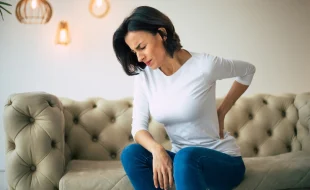Table Of Contents
Floral Remedies: The Healing Touch Of Flowers In Medicine
Last Updated on: November 15th, 2024
Beyond their aesthetic allure, flowers have long been a symbol of beauty and grace. However, their potential extends beyond the visual. For centuries, flowers have been revered for their therapeutic properties across various medical traditions. This article dives deep into the historical and modern roles of flowers, ordered via send flowers to Abu Dhabi, in promoting health and well-being.
Ancient Wisdom In Modern Medicine

Many of today’s natural remedies owe their roots to ancient civilizations. From the lavish gardens of Egyptian Pharaohs to the vast herbal collections of Chinese medicine, flowers have found a special place in healing rituals and remedies.
In ancient Egypt, the lotus flower was emblematic of rebirth and healing. It was often used in potions and ointments to treat various ailments. Hieroglyphics on temple walls also depict the importance of flowers in religious and medical ceremonies. Similarly, in ancient Greece, flowers like marjoram and rose were used for their anti-inflammatory and calming properties. Hippocrates, often referred to as the “Father of Medicine,” documented the healing benefits of numerous flowers in his writings.
China, with its rich history in herbal medicine, employed chrysanthemums for cooling and calming effects. Flowers like peony and magnolia were also integral in treating numerous health issues. Ancient Chinese texts are replete with floral concoctions for various ailments, highlighting their value in health preservation.
These practices from yesteryears have left a deep impression on modern herbal medicine. They’ve served as foundational knowledge, inspiring further studies and the integration of these floral remedies in contemporary healing practices, including aromatherapy. Today, as we witness a resurgence in the preference for natural treatments, the wisdom of our ancestors plays a crucial role in guiding these choices.
Aromas For The Soul
At the intersection of science and sensory pleasure lies the fascinating world of aromatherapy. Here, the essential oils extracted from flowers wield power that extends far beyond their pleasant scents, bridging the gap between traditional knowledge and modern science.
Take lavender, for instance. A common staple in many households for its calming scent, studies have shown that its essential oil can reduce anxiety and even assist with insomnia. Beyond its scent, lavender has also been recognized for its antiseptic and anti-inflammatory properties, making it a favourite in skin care routines. Chamomile, another popular floral scent, is not just reserved for bedtime tea. Its oil has been found to soothe skin irritations and reduce stress. Historically, chamomile was often referred to as “plant’s physician” due to its ability to revive other ailing plants nearby.
Rose oil, with its luxurious and rich aroma, goes beyond perfume. It has been shown to alleviate depression, reduce inflammation, and promote a sense of well-being. The enchanting aroma of roses has been celebrated in literature and poetry for ages, embodying the essence of love and beauty.
These floral oils have become pillars in the holistic wellness arena, with many therapists and practitioners swearing for their wide-ranging benefits, from mental relaxation to physical pain relief. As people search for organic and natural ways to boost their health, the floral essence stands out as both a timeless and innovative solution.
Blooms In Hospital Rooms:
It’s a common gesture to bring flowers to a loved one in the hospital. But have you ever wondered why? Perhaps it’s a symbol of hope, love, and the transient nature of life itself.
Research suggests that the presence of flowers in healthcare settings does more than just brighten up the space. Their presence can, in fact, contribute significantly to patient recovery. A study showed that patients with flowers or plants in their rooms reported lower levels of stress and anxiety compared to those without. Additionally, the visual appeal of flowers, with their varied colours and intricate designs, provides a form of natural art therapy, giving patients a focus for meditation and introspection.
Moreover, the view of a garden or simply having access to natural flora can positively impact patient mood, leading to faster recovery times. This immersion in nature, even if just visual, offers a respite from the sterile, clinical environment of a hospital room, providing patients with a connection to the outside world and the rejuvenating powers of nature. This perhaps explains the growing trend of hospitals incorporating healing gardens into their architectural designs.
The rationale behind this isn’t just emotional but physiological as well. Certain flowers release compounds that can purify the air, acting as natural air purifiers. Additionally, flowers like lavender and chamomile emit soothing fragrances that can promote relaxation and reduce stress. Meanwhile, the colours and aesthetics of blooming flowers can stimulate the brain, elevating mood and promoting feelings of happiness. With all these benefits combined, it’s clear that the inclusion of flowers in healing spaces is not just a mere tradition but a scientifically-backed practice that supports holistic recovery.
Conclusion
From ancient medicine cabinets to modern hospital rooms, flowers have continually showcased their multifaceted therapeutic potential. Their vibrant petals and soothing scents have the incredible ability to touch both our body and soul. They stand as testament to nature’s profound capacity to heal and nurture. So, the next time you pause to admire a flower’s beauty, take a moment to also appreciate its silent, healing touch – a remedy that has stood the test of time.
Read Also:














